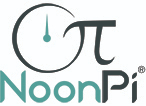Seismic Design and Construction of Dwellings and Townhouses According to the International Residential Code (IRC-2024a)
In Seismic Design and Construction of Dwellings and Townhouses According to the International Residential Code (IRC-2024a), you'll learn ...
- Fundamental concepts of seismic design of dwellings and townhouses based on IRC Code.
- Load path transfer through each building part down to the building foundation and supporting soils.
- Roof-ceiling and floor systems and wall bracing.
- Examples that have been developed to illustrate the required earthquake bracing for wood light-frame dwellings and townhouses.
Overview
This course presents a plain-language overview of design and construction provisions important to the earthquake performance of one- and two-family detached dwellings and townhouses (referred to as dwellings and townhouses in this course) constructed under the International Residential Code (IRC) (ICC, 2024a).
Specific Knowledge or Skill Obtained
This course teaches the following specific knowledge and skills:
- Connections between systems
- Effects of configuration irregularities of a building upon its response to wind and earthquake loads
- Engineered design incorporated into IRC prescriptive construction
- Load path connections and irregular configurations
- Load path connections for wall overturning
- Alternative dwelling configurations and construction methods
- Role of foundations in earthquakes & general foundation requirements
- Seismic requirements of footings and stem walls (concrete & masonry)
- Special soil conditions
- Special considerations for footings on steep sites and cut and fill sites
- Seismic requirements of basement walls, retaining walls, and stem walls(concrete and masonry)
- Wood-framed construction, and provisions for anchorage to foundations
- Role of floor systems in earthquakes
- Wood-frame floor systems
- Cantilevered floors
- Requirements for blocking: prevent joists (or trusses) from rotating (rolling) or displacing laterally from their intended vertical position
- Connection of floor joists to wall top plate or foundation sill plate below
- Framed floors using wood structural panels
- Concrete slab-on-grade floors
- Role of walls in earthquakes
- Wood light-frame walls
- Wall bracing methods
- Intermittent wall bracing category
- Continuous wood structural panel sheathing method
- Alternative braced wall panels
- Wood structural panel bracing with stone or masonry veneer
- Portal frames
- Wall bracing requirements
- Cripple wall bracing
- Examples that have been developed to illustrate the required earthquake bracing for wood light-frame dwellings and townhouses
- Sheathing nails, anchorage at bottom of walls and anchorage at top of walls
- Cold-formed steel construction: IRC limitations and requirements and earthquake requirements
- Masonry wall lateral support and anchorage
- Concrete wall reinforcing and anchorage
- Stone and masonry veneers: seismic requirements
- Role of roof-ceiling systems in earthquakes
- Wood-frame roof-ceiling systems
- Blocking and lateral load paths for roof systems
- Connection of ceiling joists and rafters to walls below
- Roof sheathing
- Lateral capacity for wood framed roofs
- Seismic requirements for masonry fireplaces and chimneys based on IRC
- Earthquake-resistant design requirements of balconies and decks
- Seismic performance of home appliances, equipment, furniture, and contents
- Anchorage of furniture and other home contents against earthquake
- Horizontal and vertical addition to an existing dwelling or townhouse: consideration of gravity, earthquake and wind loads
- Seismic retrofitting and strengthening of dwellings and townhouses: superstructure and foundation
- Seismic retrofitting and strengthening of retrofit of masonry chimneys
- Anchorage of elevated decks, porches, trellises, and carports
Certificate of Completion
You will be able to immediately print a certificate of completion after passing a multiple-choice quiz consisting of 42 questions. PDH credits are not awarded until the course is completed and quiz is passed.
| This course is applicable to professional engineers in: | ||
| Alabama (P.E.) | Alaska (P.E.) | Arkansas (P.E.) |
| Delaware (P.E.) | District of Columbia (P.E.) | Florida (P.E. Area of Practice) |
| Georgia (P.E.) | Idaho (P.E.) | Illinois (P.E.) |
| Illinois (S.E.) | Indiana (P.E.) | Iowa (P.E.) |
| Kansas (P.E.) | Kentucky (P.E.) | Louisiana (P.E.) |
| Maine (P.E.) | Maryland (P.E.) | Michigan (P.E.) |
| Minnesota (P.E.) | Mississippi (P.E.) | Missouri (P.E.) |
| Montana (P.E.) | Nebraska (P.E.) | Nevada (P.E.) |
| New Hampshire (P.E.) | New Jersey (P.E.) | New Mexico (P.E.) |
| New York (P.E.) | North Carolina (P.E.) | North Dakota (P.E.) |
| Ohio (P.E. Self-Paced) | Oklahoma (P.E.) | Oregon (P.E.) |
| Pennsylvania (P.E.) | South Carolina (P.E.) | South Dakota (P.E.) |
| Tennessee (P.E.) | Texas (P.E.) | Utah (P.E.) |
| Vermont (P.E.) | Virginia (P.E.) | West Virginia (P.E.) |
| Wisconsin (P.E.) | Wyoming (P.E.) | |





